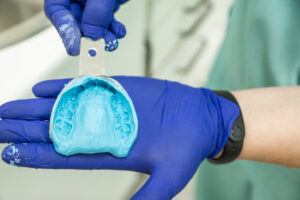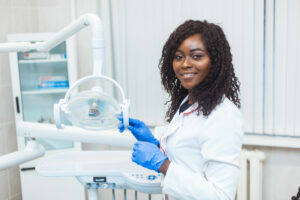It is important to monitor our patients during their Invisalign treatment. It is hard to defend the ‘hand all the aligners at once and see you at the end’ approach. Yet we likely all monitor our patients slightly differently, using different time frames, technology, and tools.
Why do we need to monitor our patients?
I like to describe myself, the team, and the patient as a team during the Invisalign treatment. We all have a role in the planning of the case, although ours is significantly more during this part, ensuring the patient feels involved in the planning improves expectations, outcomes, and satisfaction with the result. During the treatment the patient’s role is to ensure good compliance, my team’s role is to ensure a good patient journey and my role is to ensure the treatment is progressing as planned.
Monitoring patients is crucial to success. It helps us ensure that the teeth are tracking according to the plan. It is far easier to correct a tooth that’s not tracking the earlier we can identify the problem. It gives an opportunity to reinforce compliance as well as ensure that good oral hygiene is being kept up, preventing caries or periodontal issues arising. We can motivate our patients by showing them where their teeth have moved to compared to where they started. I find that this also helps to prevent the patient from moving the goalposts – patients do forget where they started! We can continue to educate our patients about how their teeth are moving and any complex movements we are trying to achieve as well as how their teeth will be retained at the end of treatment.
How can we monitor our patients?
As mentioned above we likely all have a different approach to how we monitor our patients. Below I outline my current approach to ensuring my patient’s treatment is proceeding as planned.
There are two main ways I monitor my patients:
- In surgery
- Invisalign’s Virtual Care
Surgery has been the basis of monitoring patients for many years. It allows us to carry out a full inspection of the teeth and patient whilst also having a face-to-face conversation. Virtual care is relatively new and brings with it its own benefits; we can monitor it from afar and more frequently.
My process for in-surgery monitoring:

- Discuss how patient is finding treatment including any problems they have faced. If problems are reported then we discuss solutions and provide personalised tips and tricks
- Discuss the patient’s compliance. Any lapse of compliance reported is discussed and the patient is educated on the impact of treatment.
- Check the aligners are fitting (they must be brought to the appointment!) If a tracking issue is seen then I will check compliance, contact points and ask the patient to wear for an additional week before attending the practice again to evaluate if the tracking issue has been rectified.
- Check the attachment fit and ensure they are all in place. A missing attachment will lead to decreased tooth movement efficiency and will need to be replaced. I order an attachment template that corresponds to the aligner week before inviting the patient back into the practice to replace the attachment.
- Compare the tooth position to the expected position on the Clincheck. I like to have the Clincheck open on the computer set the corresponding week the patient is on.
- Scan with the iTero & use progress monitoring software. This is a great educational tool as the patient and I can visualise how each tooth is moving.
- Check contact points with the yellow IPR strip, if any contacts are tight, I will loosen them to allow the teeth to continue to move.
- Proceed with further IPR if needed, I keep a record of the IPR I have carried out at each appointment on the Treatment Overview.
- Deliver the next set of aligners to the patient.
My process for Virtual care:
- Review the Clincheck versus the virtual care photos to determine movements and stages. This means having the Clincheck open at the same time, I will split my computer screen so I can see both together.
- Review the patient’s comments (if there are any!)
- Determine the right action – a)Tracking to plan so the patient can carry on to the next aligner b) Instruction to wear longer or c) Instruction to contact the practice as the patient needs to be seen
From the start of treatment, our patients are aware that there will be a mix of the two monitoring systems. Most commonly I see the patient every 4-6 weeks in surgery and review their photos weekly via Virtual Care. I ask them to send the Virtual Care photos the evening before they are due to change their aligners, so I have a day to review their photos fully. This has proved to work well, not only for me to keep monitoring patients but also for their personal motivation as I am expecting to see the results weekly, and they can also see their tooth alignment improvement week by week. I find the in-surgery appointments are quicker and tracking issues are far less. So, this has been a winning combination for me! It is important that we remain flexible with our approach to take advantage of technological advances and new innovations.
Article by Dr Camilla ‘Millie’ Morrison





